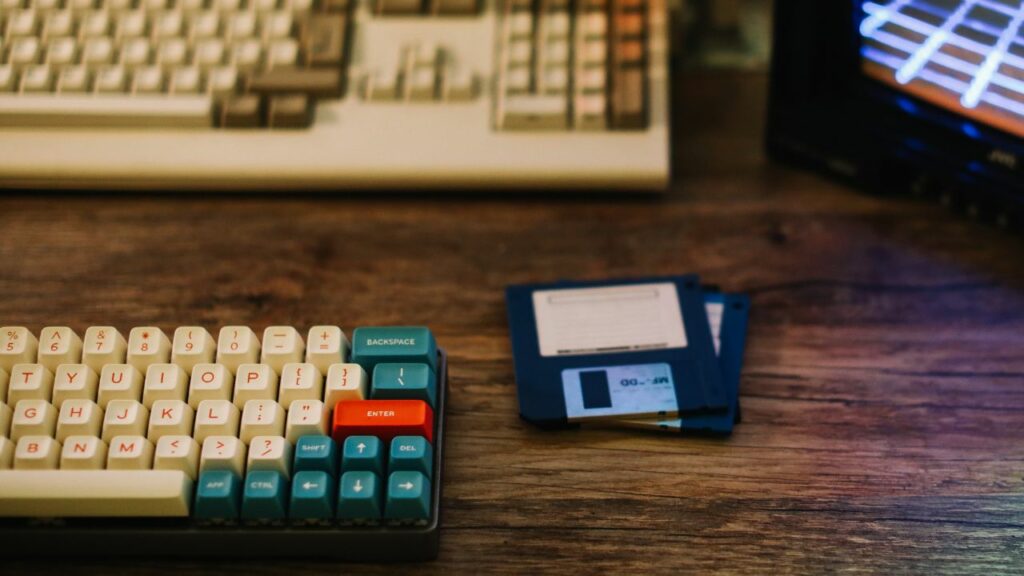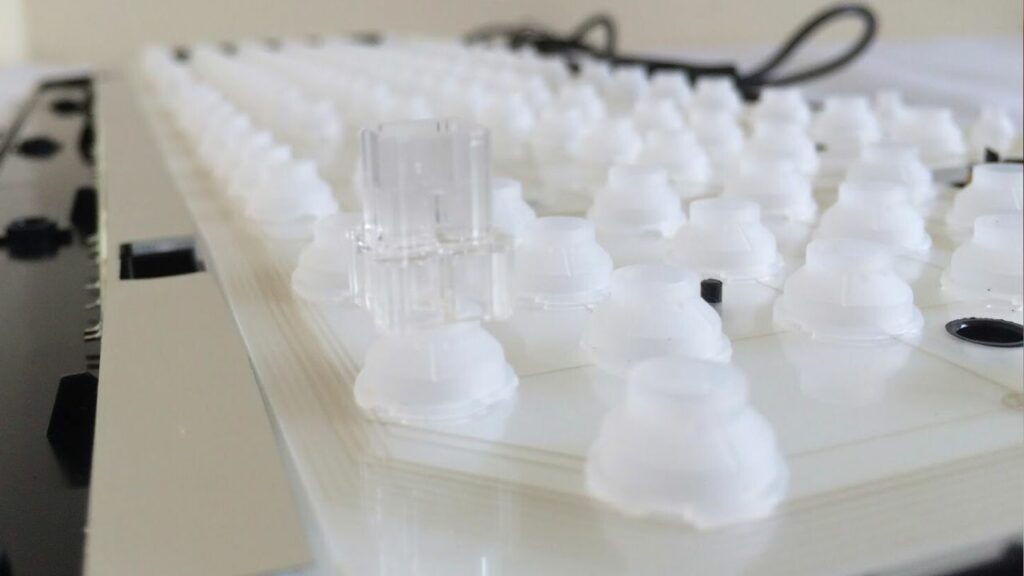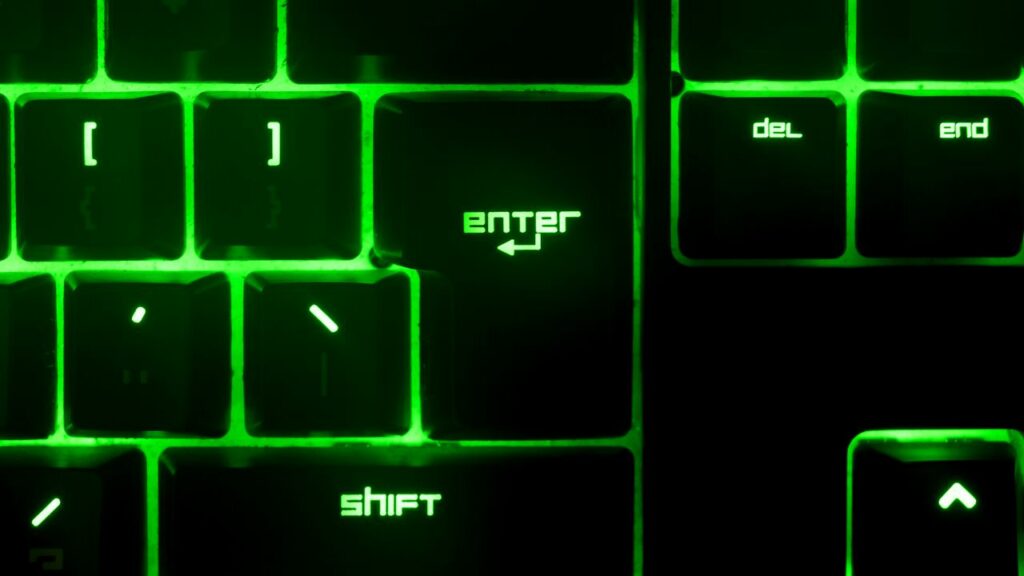
The journey to the modern mechanical keyboard started as far back as the 1700s, with the evolution of typing technology. The birth of commercial typewriters in the 1870s, such as the Remington Sholes & Glidden typewriter, was a major leap forward for this technology. By 1910, all typewriters had a standard design with minor updates, making it easier and more efficient for users.
The Move Towards Mechanical Keyboards
Fast forward to 1961, IBM released the Selectric typewriter which used typeballs instead of type-bars. This innovation improved speed and efficiency in typing. But the real game-changer came about in the 1970s when computers became consumer-friendly products. Keyboards soon became our primary input device for all typing work.
IBM continued to lead innovations when they introduced their iconic Model M keyboard in 1984. It provided unmatched accuracy and comfort to typists despite being expensive to produce. If you’re a fan of retro keyboards, here’s a list of some that you might like.
Rise and Fall of Mechanical Keyboards
As the 1990s rolled around, the keyboard landscape shifted dramatically. The mass market was flooded with inexpensive rubber dome keyboards backed by membrane technology, causing a dip in the popularity of mechanical keyboards. But who doesn’t relish a riveting comeback tale? Fast forward to the early 2000s, and we find a spirited group of computer aficionados reigniting their passion for mechanical keyboards.
Resurgence of Mechanical Keyboards
During this period, few small companies began producing new mechanical keyboards using modern switch technology. Today dozens of companies produce mechanical keyboards offering a wide range of switches like Cherry MX switches, Razer switches and Logitech switches amongst others.
If you’re wondering how these new-age mechanical keyboards work compared to their older counterparts or membrane keyboards, this article should give you some insight.
Why Choose Mechanical Keyboards?
There are many reasons tech enthusiasts prefer mechanical keyboards today – from minimizing typos due to tactile feedback effect, being long lasting and easy to clean – they simply improve response time and typing speed!
Not only that but modern mechanical keyboards offer features such as customizable lighting, keycaps, macros and programmable layers. And if you’re into gaming (who isn’t?), this piece explains why mechanical keyboards might just give you an edge over your rivals!
Still think these are too pricey? Don’t worry! There are some great budget-friendly options out there too!
The Era of the IBM Model M
In 1984, IBM released the iconic Model M keyboard. The Model M was a game-changer in the evolution of keyboards. It provided unmatched typing accuracy and comfort, thanks to its unique “buckling spring” key design. This design gave each keystroke a distinctive tactile feedback and audible click, which made typing a more satisfying experience. However, due to its high production cost, the Model M was considered a luxury item, available only to a select few.
The Rise of Rubber Dome Keyboards

By the 1990s, manufacturers were looking for cheaper ways to produce keyboards en masse. This led to the rise of rubber dome with membrane keyboards. These keyboards used a simple structure: underneath each keycap was a rubber dome that collapsed when pressed, triggering an electrical circuit on a membrane layer below. While these keyboards were less durable and lacked the tactile feedback of mechanical keyboards, their affordable price made them dominate the market for decades.
The Mechanical Keyboard Community
In the early 2000s, a small community of computer enthusiasts began rediscovering mechanical keyboards. They appreciated their durability and satisfying tactile feedback. This resurgence led to small companies producing new mechanical keyboards using modern switch technology. Today there are dozens of companies that produce mechanical keyboards offering various switch types like Cherry MX switches, Razer switches and Logitech switches.
Modern Innovations in Mechanical Keyboards

Today’s mechanical keyboards offer an array of features that make them versatile tools for various uses – not just typing! Many models now offer customizable RGB lighting effects that can be tailored to match your personal aesthetic or mood. Some feature programmable macro keys that can execute complex commands with a single keystroke – perfect for gamers or professional users who frequently use specific software shortcuts.
FAQs
Demystifying Cherry MX Switches
Cherry MX switches are a fascinating breed of keyboard switches renowned for their durability, performance, and versatility. Born from the German company Cherry Corporation, these switches have become a staple in the world of PC gaming and professional typing. The unique design allows for a range of tactile experiences and sound levels to suit different user preferences. Whether you’re an avid gamer or a dedicated typist, Cherry MX switches cater to all with options that offer whisper-quiet operation or satisfying tactile feedback.Cherry MX switches are among the hot favorites in the mechanical keyboard switch market. Each model, identifiable by a unique color – Black, Red, Brown or Blue – carries distinct traits. These colors aren’t just for show; they symbolize various features like the required actuation force and whether they give tactile or auditory feedback. It’s like each color speaks its own keyboard language!
What is the difference between mechanical and membrane keyboards?
Mechanical keyboards have individual switches under every key which provides more accurate feedback and longer lifespan compared to membrane keyboards which register key presses by completing an electrical circuit through a flexible plastic membrane.
Why are mechanical keyboards preferred for gaming?
Mechanical keyboards offer faster response times and more precise control than membrane models making them ideal for gaming where every millisecond counts. Plus, they often come with additional features like programmable keys and customizable lighting that appeal to gamers.
Are there affordable options for mechanical keyboards?
Sure, there are top-tier models that come with a hefty price tag. But don’t let that deter you. The market today is brimming with economically priced options that don’t skimp on either quality or performance.
Wrapping It Up…
From their simple origins in the early era of typing tech to their comeback in our modern digital age, mechanical keyboards have proven they’re here to stay! Delivering precision, comfort, and a smorgasbord of personalization possibilities, it’s no wonder these tactile titans are a hit with techie folks and gamers alike.